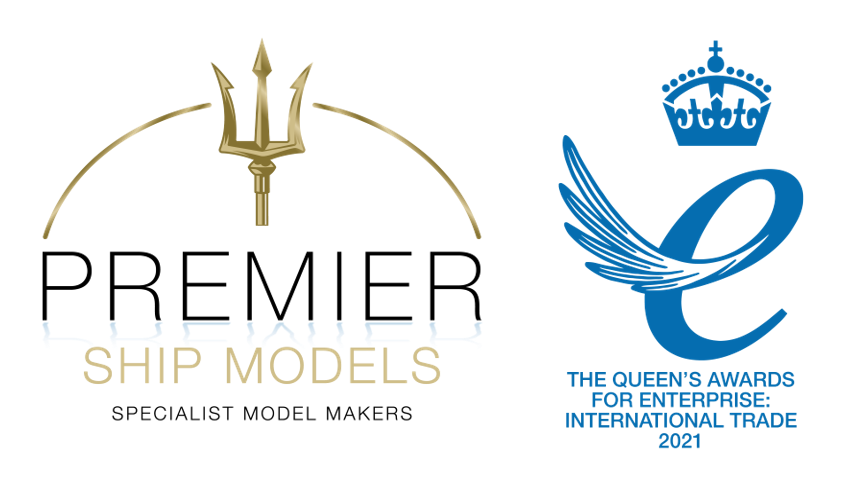The Ulysses Superyacht is a luxury motor yacht that was launched in 2018 by Lurssen Yachts, a German shipyard. It has an overall length of 170 meters and is one of the largest yachts in the world. It features a sleek and modern design with amenities such as a swimming pool, cinema, helicopter landing pad, and multiple decks for entertaining guests. The interior of the yacht was designed by Remi Tessier and can accommodate up to 20 guests in 10 cabins. The Ulysses Superyacht is a private yacht and is not available for charter.
Remi Tessier is a world-renowned interior designer, and his works reaches across a multitude of various superyachts, including the 85m Lürssen yacht Areti, the 60m CRN yacht Darlings Danama, the 60m Feadship yacht Paragon, and the 52m Perini Navi yacht Morning Glory.
This project was completed for a private client, and so not much can be said here, except for the fact that the client was immensely happy with the end result. They were pleased with the speed and quality of the project, as well as the level of transparency provided.
The model was to be 3D printed, and would measure in at 61 centimetres in length. It would also come with a base, case and an engraved plaque.
3D-printing is an incredibly complex profession. It requires you to understand three main things:
- The material
- The printer
- The methodology of the piece and your desired end result
The entire process is extremely specialist. Our 3D-modeller focuses on two skillsets when constructing models: creating the model in a digital manner and readying it for printing, and the separate skillset to take the parts from the printer and get them to a professionally high-standard.
When it comes to the actual process of 3D-printing, there are two core stages: presentation and production. Presentation involves researching the ship itself, liaising with the client and then creating renders for said client to review. Production is the actual printing and subsequent construction of the unit as a whole.
As mentioned above, the initial stage of any build involves liaising with the client, and conducting as much research as possible. We also try and gather blueprints so as to retain the highest levels of accuracy and intricacy. Next, smaller details such as colour schemes and decals are discussed, and these really bolster the realistic aspect of the ship.
After these preliminary discussions, our 3D-modeller will create a digital model, complete with colour, decals, logos and other additional features. These will then be presented to the client for review, and is opened up to a round of questioning so the model can be refined and eventually perfected in the exact way the client wants.
Once the client has signed-off on the digital renders, production can begin. One of the trickiest stages is converting the digital render into a file that is compatible with the 3D-printer, and so certain software has to be used to achieve this. Before this is done, the render itself is split into chunks – which are actual parts of the model (albeit digitalised) – and accordingly named and saved where appropriate. After this, another piece of software is used to ensure the parts are ready to be printed; making sure they’re of the right scale, are sturdy enough and watertight.
After the pieces are confirmed to be the correct shape and size, another piece of software is used that ensures they can actually be printed. This software completely disregards the shape, and only pays attention to how it will physically 3D-print.
Each piece requires support, and so every chunk is printed together with its own scaffolding, in an almost lattice-like structure. These are positioned on specific parts of the units where they won’t be seen in the end product, and can be safely detached without spoiling the models themselves.
3D-printing a small unit tends to take around twenty-four hours. Once this is done, the piece will come out on a platform. The material is fairly sticky, as it’s acrylic resin. Each piece is also usually quite hot and fragile, and so they must be cleaned carefully. They come out on a tray, and after this, the tray is placed in an IPA solution, which is effectively 99% pure alcohol. There is a rotor at the base of this machine, which agitates the IPA solution and guarantees that all surfaces of the piece on the tray are evenly covered. The tray and all of the attached pieces remain in the IPA solution for about thirty minutes, before being taken out and left to dry naturally. It can take up to two whole days for the unit to dry completely, but this is vital in retaining the strength and rigidity of each piece.
Once the unit has naturally dried, our 3D-modeller will then take it and place it in a UV curing machine, which grants the piece with an extra layer of hardness. Then the lattice structure can be removed (however, it’s important to note that this particular step can actually happen at any time, depending on the piece). The unit is usually left for a further two days to completely dry, and when you have enough pieces, assembly can begin.
Now that all the parts are out of the printer, they can begin being merged together to form the model in its entirety. Of course, the assembly itself will take a little bit of time. If the project were to consist of multiple models, or a much larger one, our 3D-modeller would continue printing other pieces as he begins the build. However, as the Ulysses was a single unit, this wasn’t a necessity.
The construction itself is obviously the hands-on section, where specialists are required. It is known as the ‘finishing.’ The hull of any model is normally split into three pieces, and they will each have joints. These joints were glued together and then left to dry, before additional features could be added. However, the hull is painted before any more pieces are added, and this protects the viscosity of the glue, ensuring the model remains rigid and has no chance of falling apart.
Whilst the construction of the hull is happening, our 3D-modeller will also focus on laying out all of the smaller pieces, cleaning them and then painting them individually. The decking area was printed separately, and this could be attached once all three pieces of the hull had been assembled.
However, whilst the ship is now complete, there are still a number of things to do. Most importantly perhaps is the installation of a display case. Two holes are drilled into the base, and a pair of hollow stainless-steel rods can be placed in these, connecting the base to the ship. Within the models he makes, our 3D-modeller incorporates a metal socket, and this allows him to seamlessly screw between the model and the base, through the stainless-steel rods. This prevents the possibility of any kind of eyesore, and leaves the model looking pristine and tidy. The display case base and the model then effectively become one unit.
After this, the plate can be attached to the base. They are pre-cut by laser, and have a sticky back. Therefore, this stage of the process is fairly quick.
Once this has all been done, the model is complete, and ready to be transported to the client for installation.
The client was left thrilled with the level of detail with the Ulysses model, as well as the transparency and communication demonstrated throughout.
This project was completed back in 2021, and so restrictions from COVID did prove to be a slight obstacle. Face-to-face meetings were not possible and so communication wasn’t necessarily as efficient, but thanks to the digitalisation of the company, as well as high levels of dedication and persistence, the project was seen through without a hitch.
Excellent work was conducted by our 3D-modeller, from liaising with the client all the way through to installing the models. He carried out the work swiftly, and to an excellent degree of quality.
We’re incredibly proud of this model, and of course pleased that the client was happy with their purchase!
Commission your own model
If you would like to have your own bespoke model built, please complete the contact form below.


